In this article:
Have you ever looked at someone’s beautiful flowers spilling out from their balcony and wanted to grow your own? Or have you seen the rich green spines of an aloe vera plant and thought it was an easy-enough plant to maintain?
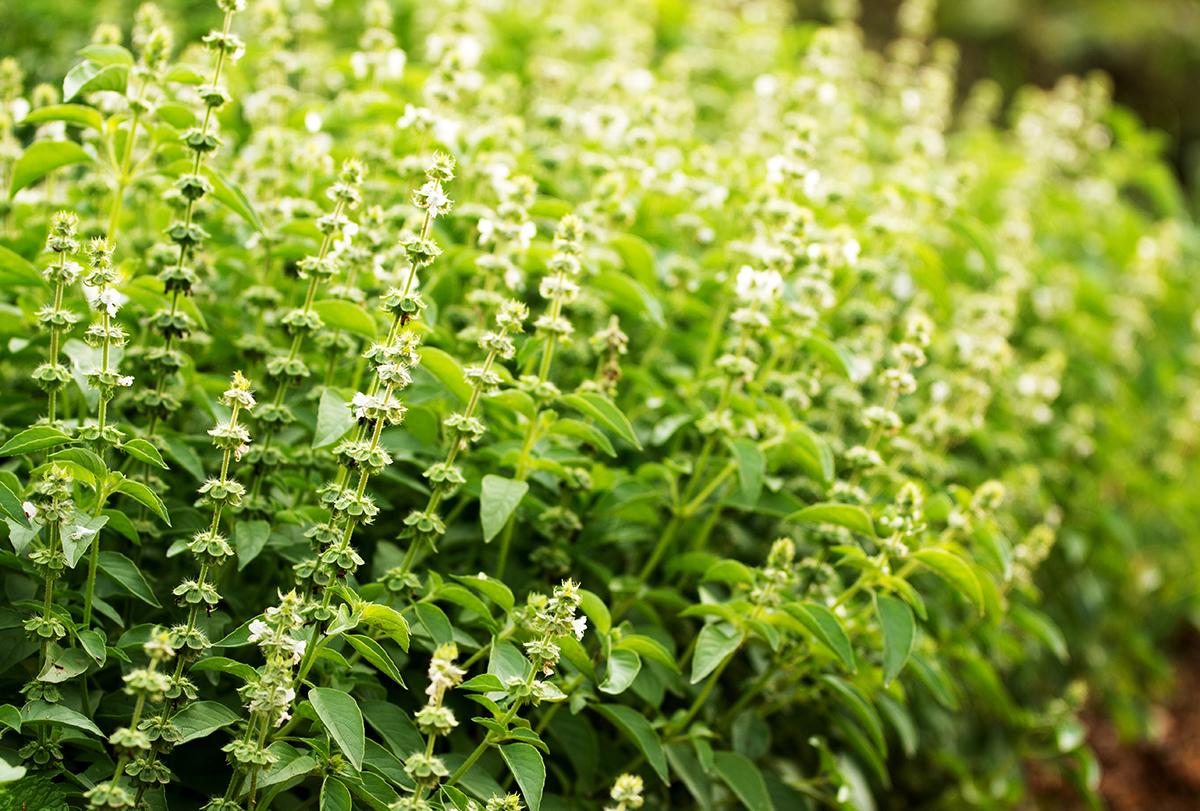
Perhaps this article will convince you to start a garden!
Growing plants is a wonderful habit that has many benefits for mood and well-being. There is increasing evidence that gardening can benefit mental health and can be good for the environment. (1)
Not only that, if you choose the right plants, you can even reap some medicinal benefits from them!
Top Plants to Grow in Your Garden
Here are 10 simple herbal remedies straight from your garden.
1. Aloe vera for issues from head to toe
Aloe vera is an easy-to-grow plant that can survive well in many conditions. It is considered a medicinal plant and has antioxidant, anti-inflammatory, antibacterial, antiviral, antiseptic, and wound-healing properties. (2)
When applied topically, it can be a useful remedy for burns and wounds. The leaves can be harvested and its inner gel can be consumed to aid digestive disorders such as acid reflux, gastritis, nausea, difficulty swallowing, and belching. (3)
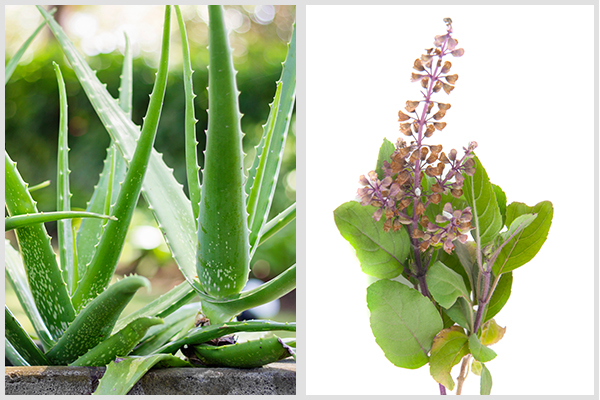
2. Holy basil/tulsi for common cough, asthma, and even insect bites
Holy basil, or tulsi, has a special place in the Ayurvedic medicinal system as a remedy against certain illnesses. The leaves of holy basil are used as a remedy against asthma, diarrhea, indigestion, nausea, insect bites, and the common cold. (4)
Brew a tulsi tea by steeping five leaves in a cup of simmering water for 3–4 minutes. You can also consume tulsi-infused water or use it in soups and broths.
3. Mint for indigestion
Mint is an easy-to-grow plant that smells and tastes refreshing. The leaves of mint are used as a folk remedy against indigestion, flatulence, abdominal cramps, and even nausea. (5)
Studies have also found mint to be useful for reducing pain, bloating, gas, diarrhea, and constipation in patients with irritable bowel syndrome. (6)
Mint leaves can also be chewed to release their beneficial oils and reap their benefits.
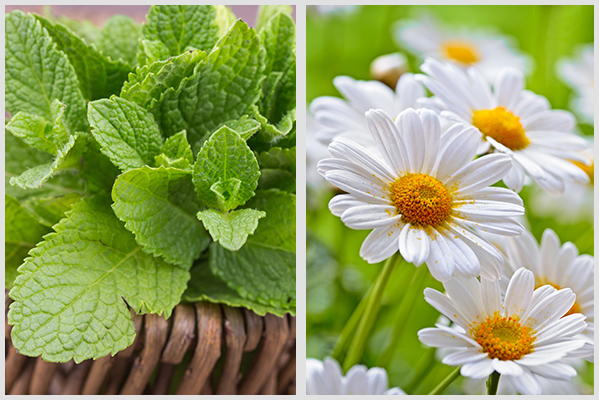
4. Chamomile for stomach cramps and insomnia
Chamomile is a wonderful flowering plant to grow in your garden as it has a sweet scent. Its tea is traditionally used to treat insomnia (sleeplessness) and create a calming state of mind. (7)
In addition, chamomile is beneficial for easing stomach cramps, soothing muscles of the stomach, and treating gas and other types of gastrointestinal irritation. (7)
5. Calendula for sore and cracked nipples
Calendula, also called pot marigold, is different from ornamental marigold. You might have seen it as an ingredient in topical creams for healing wounds.
Calendula has antibacterial and anti-inflammatory properties that reduce inflammation and increase the speed of healing. (8) It is also used to heal sore and cracked nipples during breastfeeding. (9)
To make a DIY calendula salve, add 4–5 flowers to half a cup of olive oil, coconut oil, or jojoba oil. Let the flowers infuse for a week, and use the oil as needed.
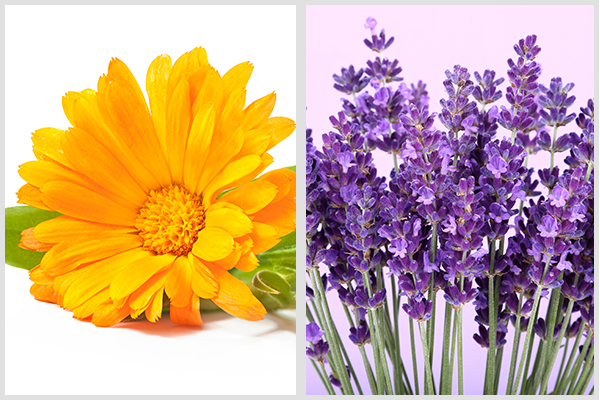
6. Lavender for anxiety, stress, and depression
Lavender is another beautiful flowering plant to add to your garden. The plant does require more attention and care, but it’s worth the effort.
The flowering tips are often used as an aromatherapy agent to manage symptoms of anxiety, stress, and depression. (10)
Infuse lavender with olive oil, coconut oil, or jojoba oil, and apply it to your skin, or you can add lavender to a pot of hot water and inhale its steam.
7. Sage for asthma, digestive issues, and some skin conditions
Sage is a herb that is often used in cooking to add depth of flavor to dishes. But its medicinal properties also make it a suitable plant to add to your home garden.
Its bioactive compounds, including flavonoids, terpenoids, and other essential oils, make it a useful remedy against cough, asthma, digestive disturbances (stomach pains and cramps), and skin diseases such as eczema and psoriasis. (11)
Sage-infused oil can be prepared in the same way as lavender oil or calendula oil. You can also use it in normal cooking or in soups and broths.
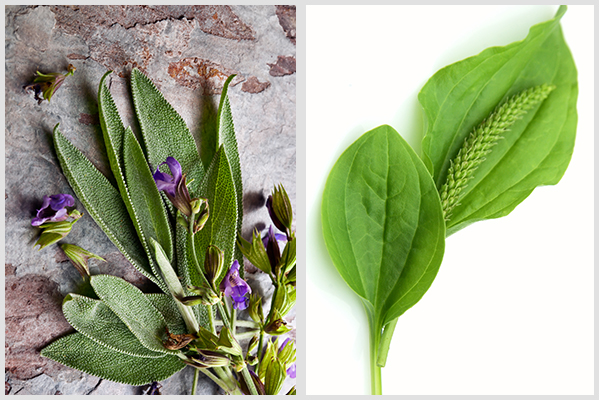
8. Plantain for cough, colds, constipation, fever, bleeding, and many more
Plantain is a medicinal plant popular in the Persian medicinal system and is widespread across Europe, America, and Asia. It is used to treat inflammation, bleeding, fever, coughs, infection, and even constipation. (12)
Tea can be made by steeping plantain leaves in a cup of simmering water. This can be used for coughs, colds, constipation, and fever.
A poultice or mask can be made by pounding plantain leaves and applying the pulp to the affected area to treat cuts, wounds, and insect bites.
9. Curry leaves for stomach issues, skin itching, and cuts and wounds
Curry leaves are popularly used in South Asian cooking and possess a myriad of health benefits.
Not only can they lower blood pressure with long-term use, but they can also be effective as a remedy against diarrhea, indigestion, and dysentery. Moreover, curry leaves can aid in the removal of parasites from the body. (13) Simply chew the leaves or prepare a chutney/dip to consume the leaves.
In addition, a paste of the leaves can reduce inflammation and can be used to treat cuts, wounds, and itching from insect bites. (13)
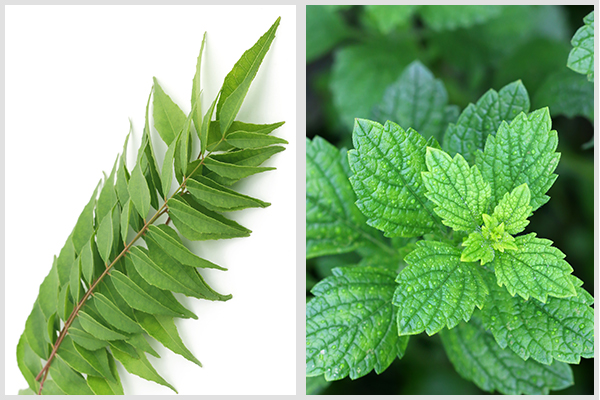
10. Lemon balm for improving mood
Lemon balm leaves have a pleasant lemon-like scent. Lemon balm tea can be used to improve mood, reduce anxiety, and relieve stress as well as promote good-quality sleep. (14)
Are These Herbs Safe to Use?
Most herbs are safe to use. Do consider individual allergies and intolerances, as well as perform a patch test before using any plant or herb on the skin.
Final Word
Growing your own herbs can not only make you feel productive and improve your overall well-being, but it can also provide a repertoire of medicinal remedies at your fingertips. These fresh herbs can be used to prepare teas, salves, or poultices and used as needed.
- Was this article helpful?
- YES, THANKS!NOT REALLY


